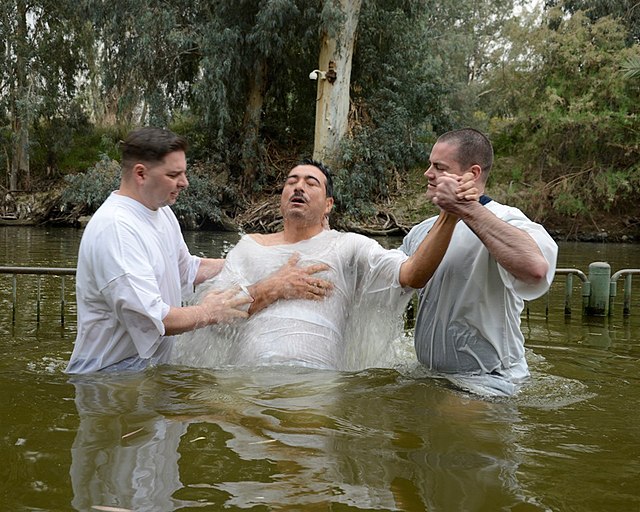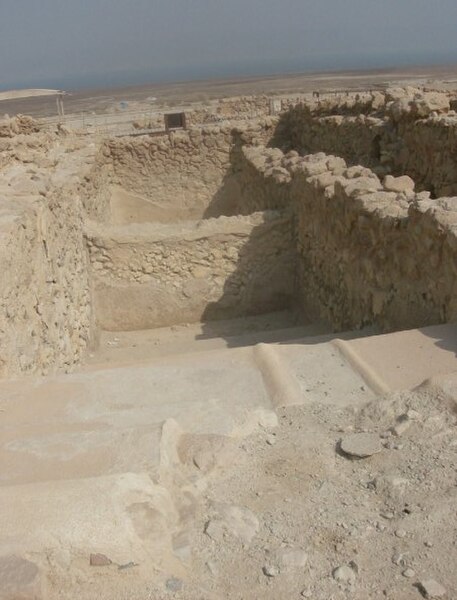An emergency baptism is a baptism administered to a person in immediate danger of death. This can be a person of any age, but is often used in reference to the baptism of a newborn infant. The baptism can be performed by a person not normally authorized to administer the sacraments.
Emergency baptism of an infant in Finland, 1920
Constantine the Great underwent a baptism while terminally ill, depicted in this 1524 painting by Raphael.
A syringe for emergency baptisms, c. 1800, Germany
Baptism is a Christian sacrament of initiation almost invariably with the use of water. It may be performed by sprinkling or pouring water on the head, or by immersing in water either partially or completely, traditionally three times, once for each person of the Trinity. The synoptic gospels recount that John the Baptist baptised Jesus. Baptism is considered a sacrament in most churches, and as an ordinance in others. Baptism according to the Trinitarian formula, which is done in most mainstream Christian denominations, is seen as being a basis for Christian ecumenism, the concept of unity amongst Christians. Baptism is also called christening, although some reserve the word "christening" for the baptism of infants. In certain Christian denominations, such as the Catholic Churches, Eastern Orthodox Churches, Oriental Orthodox Churches, Assyrian Church of the East, and Lutheran Churches, baptism is the door to church membership, with candidates taking baptismal vows. It has also given its name to the Baptist churches and denominations.

A baptism by immersion in the Jordan River.
Excavated mikveh in Qumran, Israel
Men lined up to be baptized by immersion in the River Jordan
Baptism of a child by affusion







